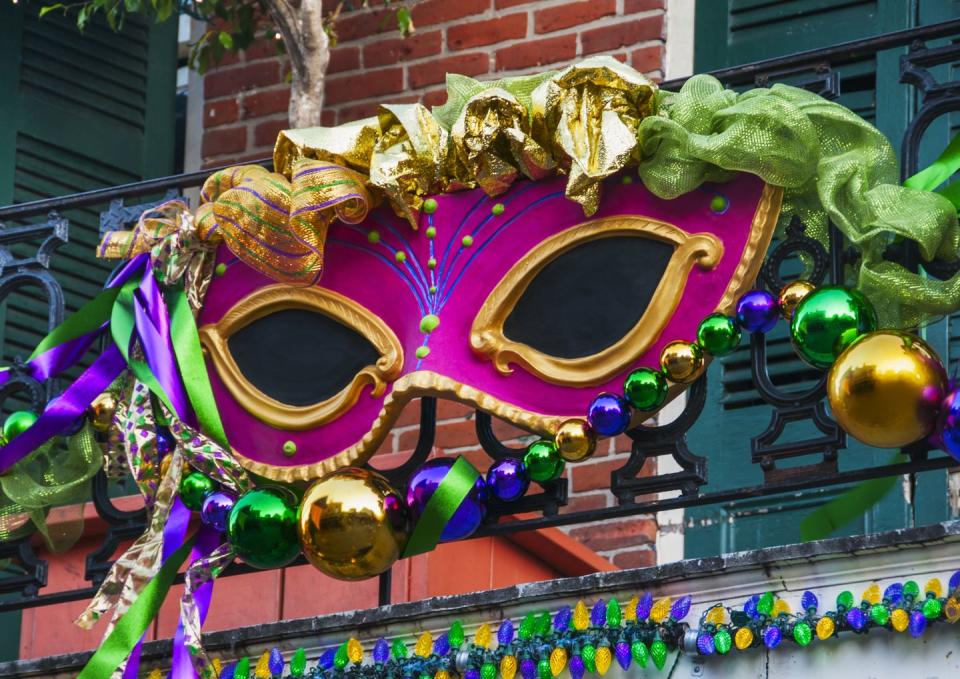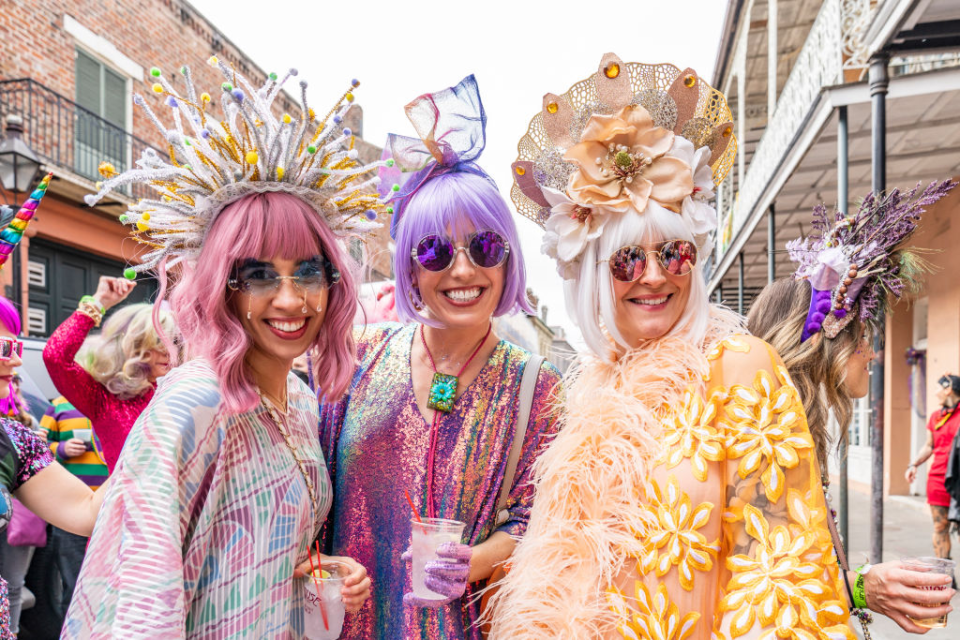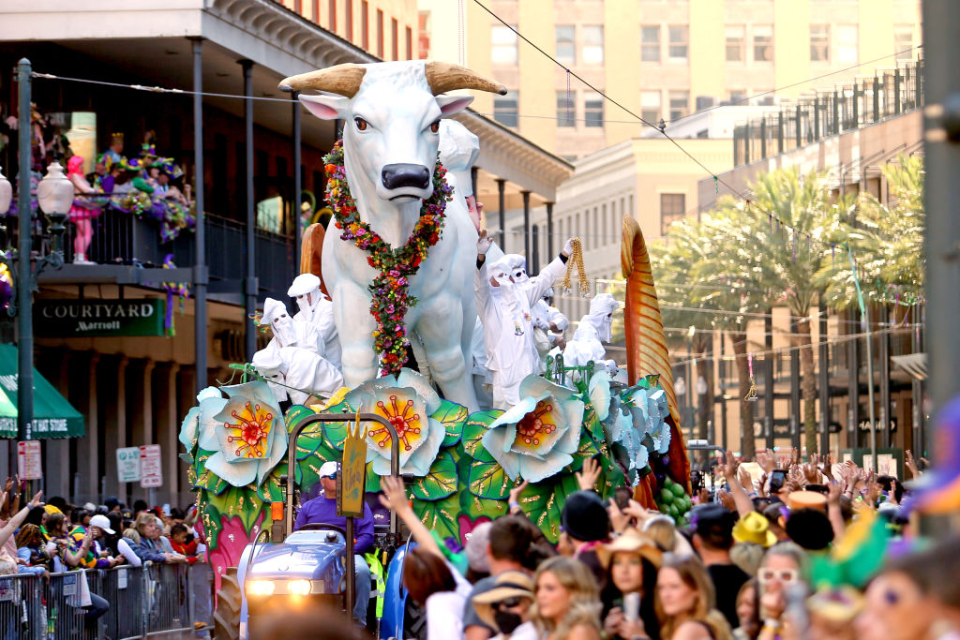The History of Mardi Gras Is Just as Fun and Exciting as the Holiday Itself
Glittering green beads fall from balconies, costumed crowds line parade routes, and jazz music fills the air—yep, you guessed it: Mardi Gras is here! Otherwise known as Fat Tuesday, this celebration draws scores of people to New Orleans every year for one big party. Even if you can't make it to The Big Easy, you can join the festivities by dressing up in dazzling Carnival costumes, decorating your home in purple, green, and gold, or preparing a spread of traditional Mardi Gras food.
Just the flavors of the Carnival season are enough to keep you coming back for more: crawfish boils and shrimp étouffée, powdered beignets and po'boy sandwiches, and king cakes with tiny baby figurines hidden inside. And if the latter seems like an odd tradition, there's plenty more where that came from! The history of Mardi Gras and its customs is a much bigger story than you may think. For example, did you know why it always falls on the Tuesday before the start of Lent? Or why exactly it's called Fat Tuesday? To answer these questions and more, read ahead for the history of Mardi Gras and why it's celebrated.

Why is Mardi Gras celebrated?
Mardi Gras is celebrated in many countries around the world, though mainly in places with large Roman Catholic populations. It's believed that Mardi Gras emerged from the wild ancient Roman festivals of Saturnalia and Lupercalia. These pagan celebrations involved days of feasting, masquerading, dancing, and drinking. When Christianity arrived in Rome, religious leaders decided to blend the traditions rather than abolish one over the other. The six-week Carnival season of debauchery became an opportunity to enjoy excess before people had to decide what to give up for Lent. Now, Mardi Gras always falls on the Tuesday before Lent, but Three Kings' Day (January 6), is both the official end of Christmas and the first day of the Carnival season.
The origin of king cakes and the funny baby tradition can also be traced to Saturnalia. Beans were baked into cakes to celebrate the harvest, and whoever found the bean was dubbed "king of the day."

Where did Mardi Gras originate from?
The Roman tradition eventually made its way to medieval France, where it acquired the name we know today. Then, European colonists brought the huge, pre-Lenten festival to the Americas. Though it dates back to the Middle Ages, Mardi Gras is now one of the world's most colorful and vibrant festivals with plenty of party-like parades, indulgent feasting, elaborate costumes, and other revelries. While Venice still has one of the most well-known celebrations, The United States, Brazil, and many Caribbean nations are now equally famous for their festivities.

What does Mardi Gras mean?
Translated to English, "Mardi Gras" means "Fat Tuesday." Mardi is the French word for Tuesday, and gras means "fat." This name comes from the custom of eating all the fatty, rich foods in the house prior to Lent in order to prepare for fasting and abstinence. So, Fat Tuesday before Ash Wednesday. Another common name for the pre-Lenten festivities, carnival, also comes from this tradition of feasting. In Medieval Latin, carnelevarium means to take away or remove meat.

When did Mardi Gras start in America?
The very first American Mardi Gras celebration took place in March 1699 after two French settlers landed near present-day New Orleans and brought their traditions with them. The French colonists who followed over the proceeding decades introduced the "Galette des Rois," or king cake, which is how it became a New Orleanian symbol.
Still, the first official Mardi Gras parade didn't happen until centuries later, and its location is up for debate. The Big Easy is almost synonymous with Mardi Gras, but some claim that Mobile, Alabama, hosted the first city-wide event.
Whatever the case may be, processions of maskers with carriages and horseback riders were commonplace in New Orleans by the late 1830s. Eventually, social clubs called "Krewes" organized balls, parties, and parades to take place throughout the Carnival season. When Caribbean communities started to form in New Orleans, their culture was incorporated into the costumes, dances, and music made by the Mardi Gras Indians—a Krewe of Black New Orleanians who had been parading since before the 19th century.
You Might Also Like

